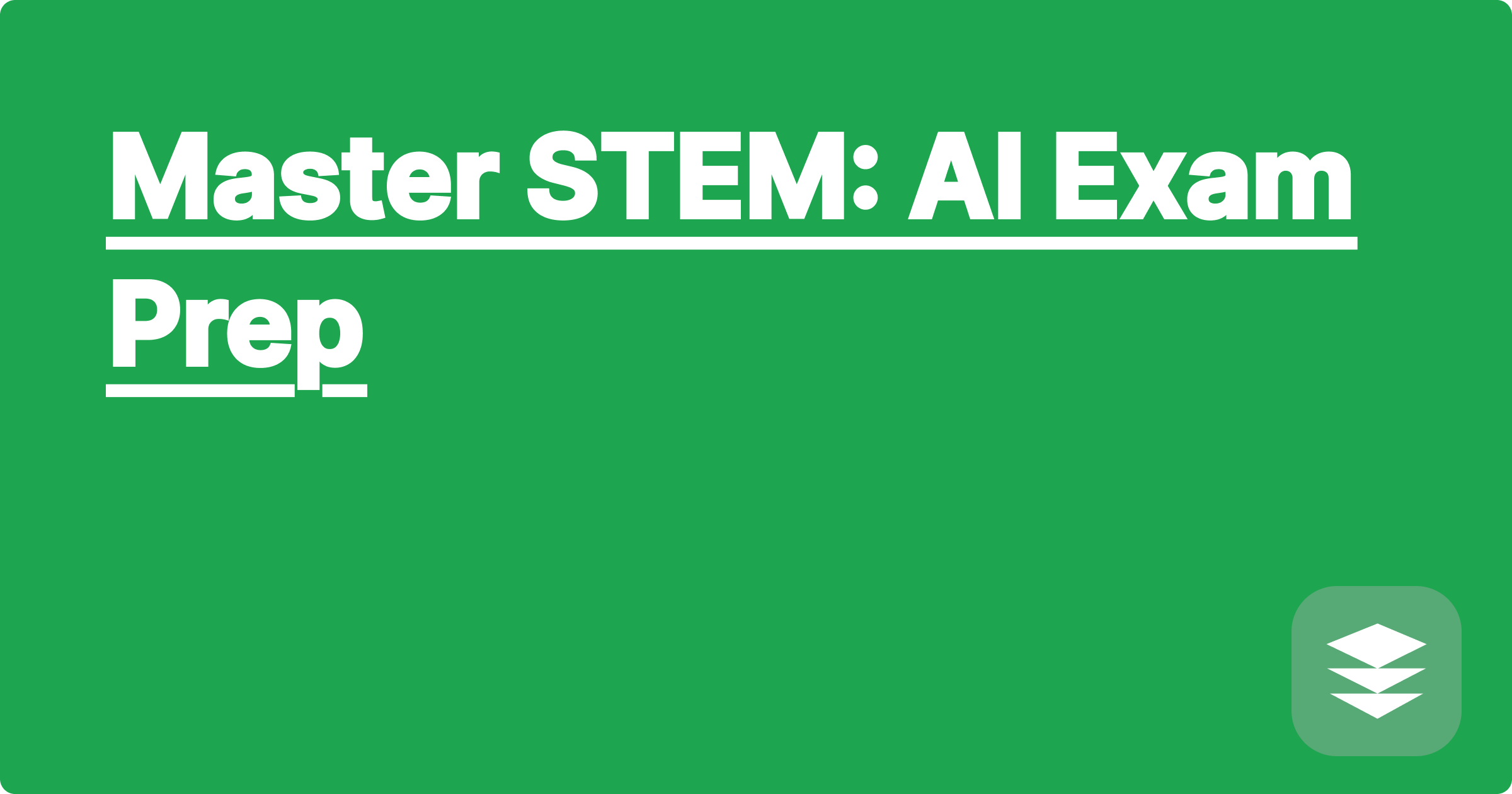
The ever-increasing complexity and breadth of STEM fields present a significant challenge for students and researchers alike. Staying abreast of the latest discoveries, understanding intricate concepts, and effectively applying knowledge in exams and research projects requires immense effort and efficient learning strategies. Artificial intelligence (AI) offers a powerful set of tools that can significantly enhance the learning process, providing personalized support, automated analysis, and rapid access to vast repositories of information. This can ultimately transform how STEM students and researchers prepare for exams, conduct research, and ultimately succeed in their chosen fields.
For STEM students and researchers, effectively leveraging AI tools can be the key to unlocking their full potential. These tools can assist with everything from understanding complex concepts and generating practice questions to analyzing data and writing research papers. Mastering the use of these AI-powered resources can provide a significant competitive advantage in academic settings and professional research environments. This blog post will delve into how AI can be utilized to revolutionize STEM exam preparation, providing practical examples, step-by-step implementations, and valuable tips for academic success.
STEM exams often cover a vast amount of material, requiring students to synthesize information from multiple sources and apply complex concepts to solve problems. Traditional study methods, like rote memorization and reviewing lecture notes, can be time-consuming and often fail to foster deep understanding. Furthermore, the sheer volume of information can be overwhelming, leading to anxiety and decreased performance. Researchers also face similar challenges, needing to quickly access and process vast amounts of data, identify relevant research papers, and formulate hypotheses. The traditional methods of literature review and data analysis can be slow and inefficient, hindering the pace of scientific discovery.
AI-powered tools like ChatGPT, Claude, and Wolfram Alpha offer a transformative approach to STEM exam preparation and research. ChatGPT and Claude can be utilized to generate practice questions, explain complex concepts in simpler terms, and even provide personalized study plans. These tools can also be used to summarize research papers, identify key findings, and generate potential research questions. Wolfram Alpha excels in computational tasks, providing solutions to complex equations, generating graphs, and performing statistical analysis. By integrating these AI tools into their workflow, STEM students and researchers can significantly enhance their learning efficiency and research productivity.
Let's consider preparing for a calculus exam. First, identify the key concepts covered in the exam syllabus. Then, use ChatGPT or Claude to generate practice questions related to these concepts. You can ask the AI to provide different levels of difficulty, ranging from basic application to more challenging problem-solving scenarios. Next, attempt to solve these questions independently. If you struggle with a particular question, you can ask the AI to provide step-by-step solutions and explanations. For example, you could ask ChatGPT to explain the concept of integration by parts or request Wolfram Alpha to solve a specific integral. Finally, review the solutions and identify areas where you need further practice. This iterative process of generating questions, attempting solutions, and seeking AI-assisted explanations can significantly improve your understanding and problem-solving skills.
Consider the following example: You are struggling to understand the concept of eigenvalues and eigenvectors in linear algebra. You can ask ChatGPT to explain the concept in simpler terms and provide examples. ChatGPT might provide an analogy to illustrate the concept or offer a geometric interpretation. You can then ask it to generate practice problems involving eigenvalues and eigenvectors. For instance, you might ask it to generate a problem involving finding the eigenvalues and eigenvectors of a 2x2 matrix. You can then use Wolfram Alpha to verify your calculations and explore the properties of the eigenvectors. Another example could be using Wolfram Alpha to solve a complex differential equation related to a physics problem or using ChatGPT to summarize a recent research paper on quantum computing.
To effectively utilize AI in STEM education and research, it is crucial to develop a strategic approach. First, clearly define your learning objectives and research goals. Then, identify the specific AI tools that can best assist you in achieving these objectives. Experiment with different AI tools and find the ones that best suit your learning style and research needs. It’s also important to remember that AI tools are meant to augment, not replace, human understanding. Always critically evaluate the information provided by AI and verify its accuracy. Finally, integrate AI tools into your existing workflow gradually. Start with simple tasks and progressively incorporate more complex applications as you become more comfortable with the tools.
Conclude by emphasizing that embracing AI tools can significantly enhance STEM learning and research capabilities. By understanding the strengths and limitations of these tools and developing a strategic approach to their implementation, students and researchers can unlock their full potential and achieve greater success in their chosen fields. Start exploring these powerful tools today and discover how they can transform your STEM journey.